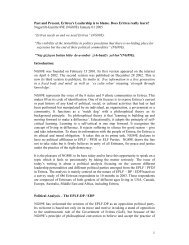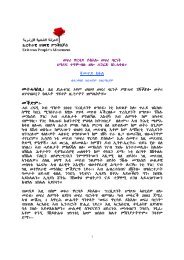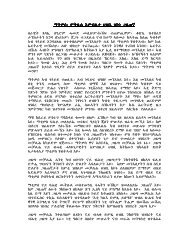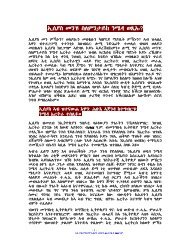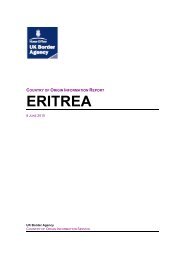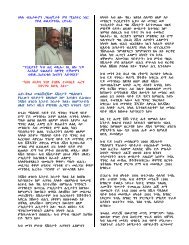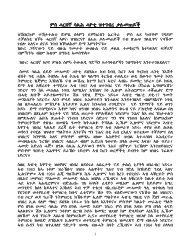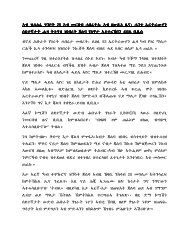Germano Nati - Ehrea.org
Germano Nati - Ehrea.org
Germano Nati - Ehrea.org
Create successful ePaper yourself
Turn your PDF publications into a flip-book with our unique Google optimized e-Paper software.
for a number of “reef” fish species because of concerns over sustainability. Thisprohibition did not include red snapper, although it is a “reef” species.9 During discussions on the prohibition on sale, recreational and environmental groupsexpressed concern about a decline in abundance of red snapper. However, there is nostock assessment information to suggest a sustainability concern, and there is no trend incommercial catch information to indicate a change in abundance of this species.10 However, MFish acknowledges the lack of information on the relationship of the currentbiomass to B MSY , the potential risk associated with the biology of the species, and theanecdotal concerns of recreational and environmental groups. Accordingly, MFishconsiders that the proposed initial TACs should be based on average catch information,rather than provide an opportunity for development by setting a TAC above the level ofestimated average catch.11 MFish notes that the introduction of red snapper into the QMS and setting TACs/TACCscould provide the opportunity for an increase in set net activity on northern reefs. Thismay result in an increase in the catch of bycatch species covered by the sale prohibitionregulation. MFish notes that there is a very small catch of red snapper currently taken byset net (2 tonnes in the 2001-02 fishing year). The majority of catch is taken as a bycatchof the longline and trawl fishery. MFish considers that the TACs proposed are unlikely tobe large enough to promote development of a set net target fishery. Also, concerns overthe impact of fishing on benthic communities will be addressed via the MFishEnvironmental Management Strategy and subsequent environmental standards.12 MFish notes that introduction of species into the QMS and setting of species-specificcatch limits will better ensure sustainability of the species through incentives created bythe balancing regime. Under the current regime, bycatch of “no sale” reef fish speciescan legally be returned dead to the water with no penalty.13 The proposed TACs are based largely on recent reported commercial landings of redsnapper by averaging the commercial catch over the last nine fishing years since 1993-94for the following reasons. Commercial landings prior to 1989-90 were not used becausethis information is less reliable. The CELR reporting system was introduced in August1989. The CELR system greatly improved the reliability of the commercial landings datastarting with the 1989-90 fishing year. Commercial landings before 1992-93 were notused because the sale prohibition regulation was introduced in late 1993. MFishconsiders that landings more than 10 years ago prior to the sale prohibition do not providean appropriate representation of the current fishery.pigfish, Sandager's parrotfish, scarlet parrotfish, banded parrotfish, green parrotfish, giant boarfish, long-finnedboarfish, marblefish, notch-headed marblefish, kelpfish (hiwihiwi), silver drummer, butterfly perch, splendidperch, toadstool groper, rock cod, red mullet (goatfish) and black angelfish.229



